At-Sunrice goes crazy for the South-East-Asian fruit
It happens every year around this time. Something is palpably different in the air—it’s thick and dizzyingly sweet. People get a wild look in their eyes as long lines form on the streets and corners, to wait and wait. But for what? What is this phenomenon? A Jay-Z concert? The zombie apocalypse? No. It’s durian season in Southeast Asia.
Never has a culture been more excited and willing to do anything for a single fruit—the mysterious and singular durian. The fervor and passion it generates is beyond belief. Comparing it to other fruits is the most extreme example of the fruit-forward expression “apples to oranges,” with durian leaving all others in the dust.
But for a fruit so beloved, it doesn’t make itself easy to love. Everything about it is bold and over the top, it’s a dare on top of a dare. To begin with it’s covered with forbidding spikes, like a fearsome medieval weapon. (In fact, durian comes from the Malay word for “spikes” or “thorns.”) To make matters worse, it’s nearly impossible to open. Compared to the gentle surrender a banana, durian’s reluctance to yield is a complete pain. To open it, you have to hack it along the five or so radial spines that are barely perceptible between the spikes. (Locals use a tool that looks something like a hoe-slash-machete.) The hacking alone breaks a sweat, but prying it open is like pulling apart the jaws of an alligator.
Once open, it reveals its inners to be styrofoam-like cavities cradling soft, yellow lobes of fruit. Weird doesn’t begin to describe it. It’s like something out of Alien! Again, it’s not really putting its best foot forward. But you have to move forward. Gingerly picking up a lobe, you bite gently into it until you reach its inner seed and then draw your teeth along it to scrape off the flesh. Its deep-seated appeal immediately hits you over the head. It’s pure custard. Soft, sweet and cuddly. The aroma alone is beguiling, a lucid whisper on the tongue. Which brings us to the next part: the smell.
As strongly as it is loved, it’s also hated with an equal passion. And it’s the smell that does it. (I find the scent sweetly intoxicating.) Like it or not, the smell doesn’t go away quickly—it tends to linger, to put it mildly. All over Asia, it is banned in public areas with no-symbol signs that sometimes seem as ubiquitous as stoplights. The love-hate relationship is part of the appeal, however—it’s an ever present challenge. Sooner or later in Asia, someone will ask you, “Do you like Durian?!” Their eyes growing wider, not only for your answer, but in titillating anticipation for the next time they’ll devour it.
On a recent trip to Kuala Lumpur, the capital of Malaysia, I was swept up into this exact, thrill-making question of yes or no. Big time. On my first night, I ended up in Jalan Alor, a sprawling, raucous food market. I was with my friends, Kwan Lui and Alvin Andrean from the top culinary school in Singapore, At-Sunrice GlobalChef Academy, and they were experiencing what I can only call durian fever. We spent nearly an hour going from stall to stall to inspect the various prices and quality, in a fashion familiar to any old world haggler. (Pro tip: never buy at the entrance or exit of the market—their prices will always be higher.) We finally landed at a stall, selected a durian (a particular variety called “Musang King”), and had them open it in front of us, while Alvin mused about the other cultivars they had on hand, “Oh, wow! They have D-40!” The recently splayed open durian elicited gasps: the holy grail of perfectly fleshy lobes. We moved to a table and donned plastic gloves, one handed style. After finishing my first piece and setting it down, everyone yelled out, “Ang Moh!” (Which essentially means “foreigner.”) Like an amateur, I had left too much flesh on the seed. Ugh. I got back to work. After polishing off all the durian, Alvin poured water into the leftover shells and rubbed them to release their essential oils. We drank from the durian armor in a move that seemed both ritualistic and a necessary finish to the journey.
“This one tastes so much like onion, how’s that! exclaimed Mulrel Al-Mashi (WSQ-DCA-076) a student at At-Sunrice holding a piece of durian aloft. Back in Singapore, I had arranged a tasting at At-Sunrice to better understand everything about durian: the taste, texture and appeal. My friend Reei Pyn had searched around to find over 11 varieties of durian and created a WhatsApp group aptly titled “durian fever” to record her market discoveries. When she brought all the durian to the school, pandemonium ensued. Even unopened, the sexy durian aroma wafted through the halls. The effect was immediate, students scrambled to see where it was coming from and they lined up at a classroom window to watch as it was unpacked. Opinions were in full swing. “Oh, that one is too old. My grandmother liked “XO” the best. I’ve never heard of D13.” At the tasting, 15 students—self described durian nuts—sampled all the varieties, giving their tasting notes along the way, to form a shorthand guide to some the major types. Here they are:
Interactive Media: Mouse (or Finger) over the picture to see the different types of durian
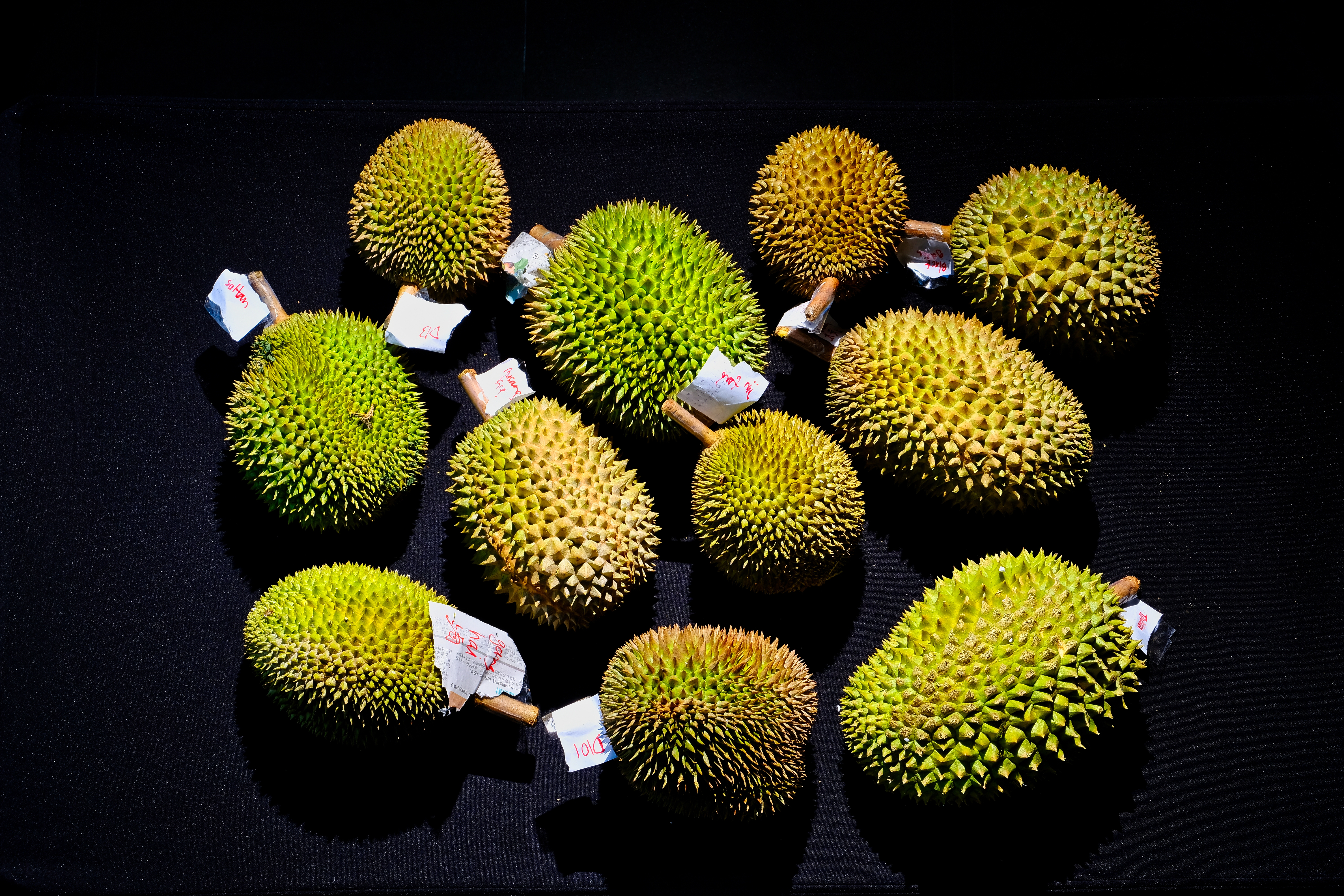


D13:


D24(Sultan):


Gang Hai:


Hong Xia (Red Prawn):


MUSANG KING:


D101:


XO:


Xin Fen (Golden Phoenix):


Black Golden:


Tai Yuan:


Tekka:
The results, unsurprisingly, were all over the map. One person’s favorite was someone else’s last place pick. Sweet and bitter (with no negative connotation for either) came up often as the two major taste profiles, with most agreeing that you needed to eat a bitter durian before a sweet one or you’d mess up your taste buds. Some of the students had strong initial predictions, but changed their mind once the vast sampling began.
“Everyone has a different personal preference based on durian’s known qualities,” said Al-Mashi. “But you never know until you open it. It’s not like a watermelon! You can’t knock on it or smell it and know what you’re getting.” Trying to corral durian’s craziness proved harder than I thought, but one thing was for sure, it’s unstoppable. And irresistible.
A version of this article was also published on Tasting Table at this link: “All About The Magic Of Durian“.
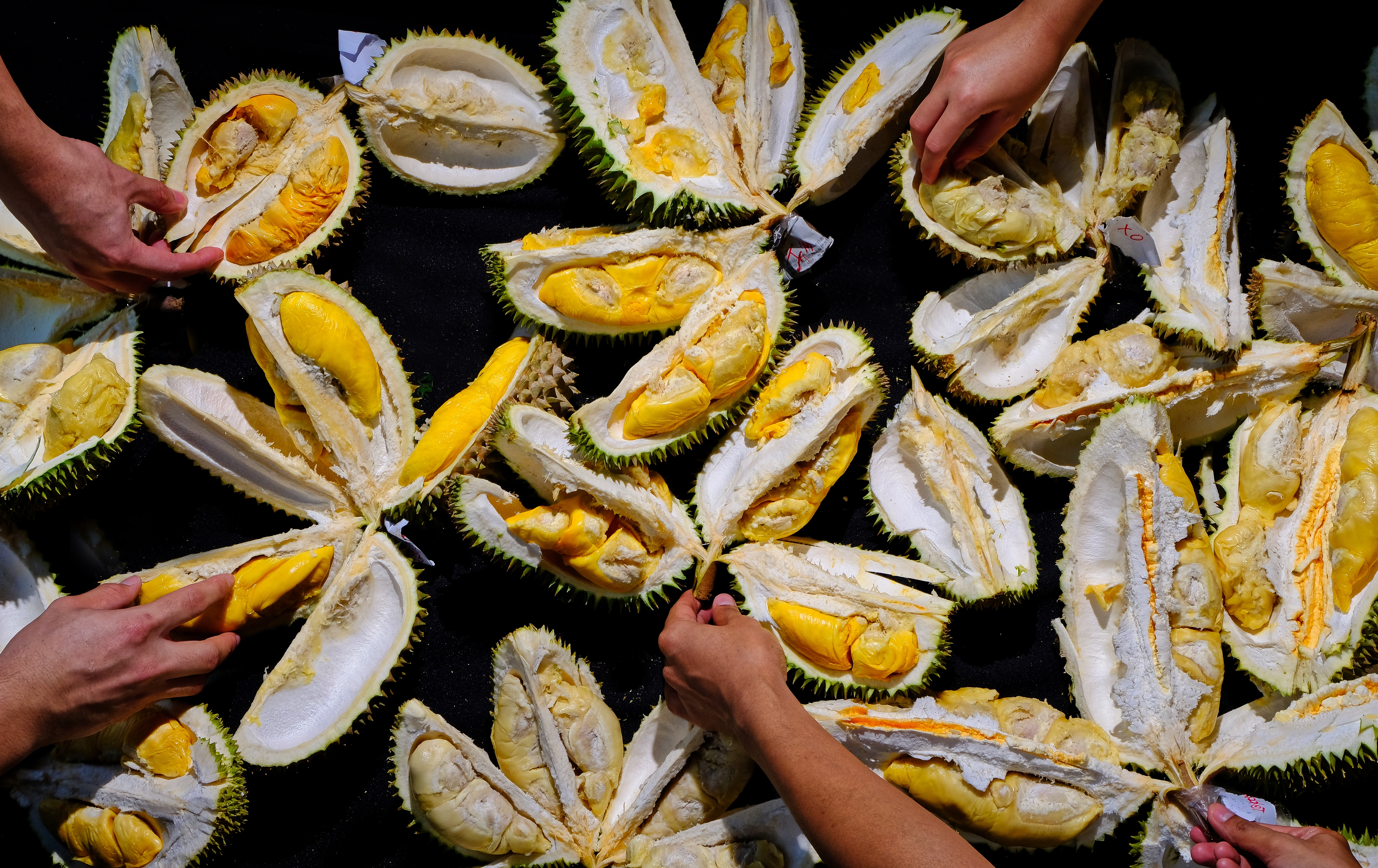
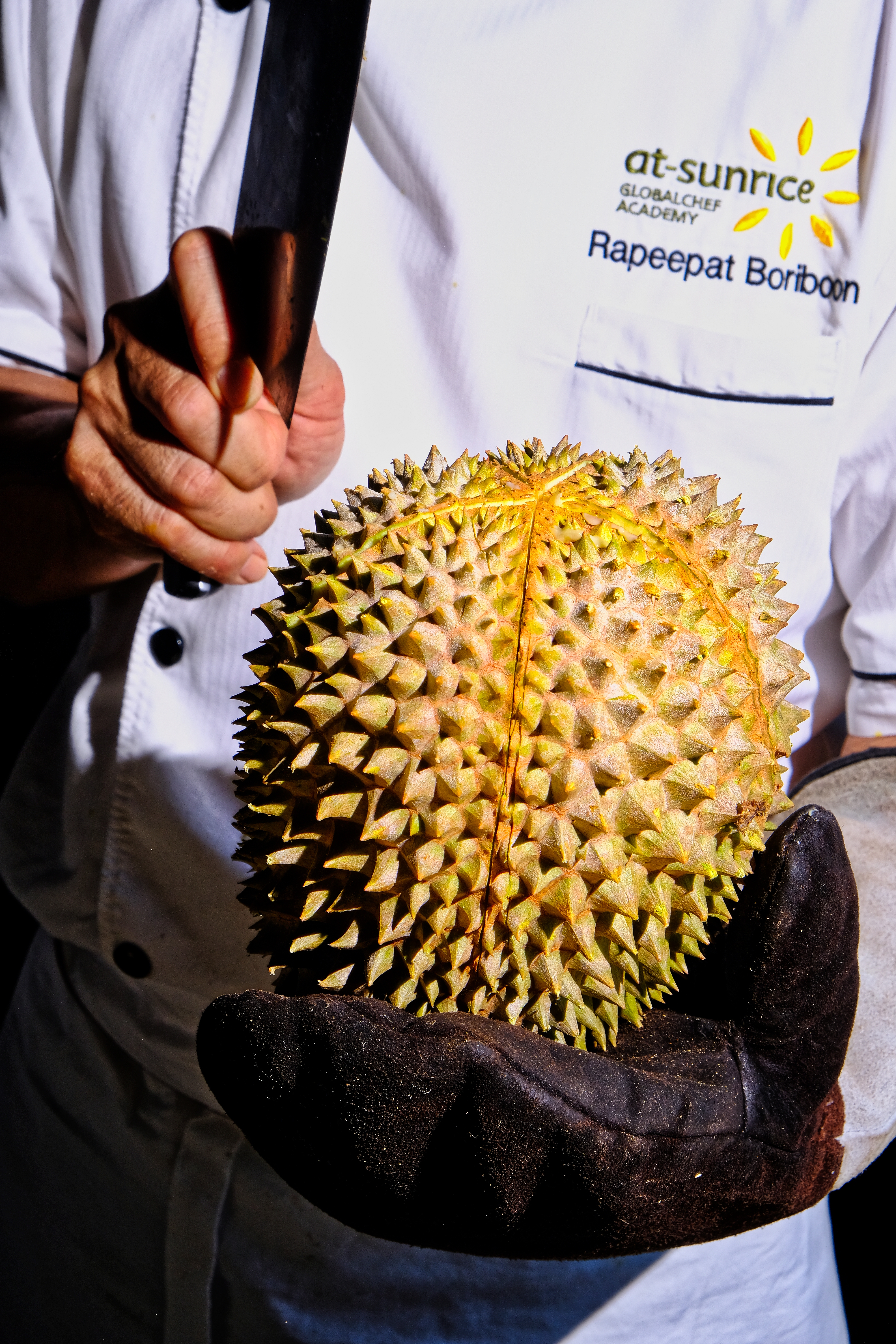
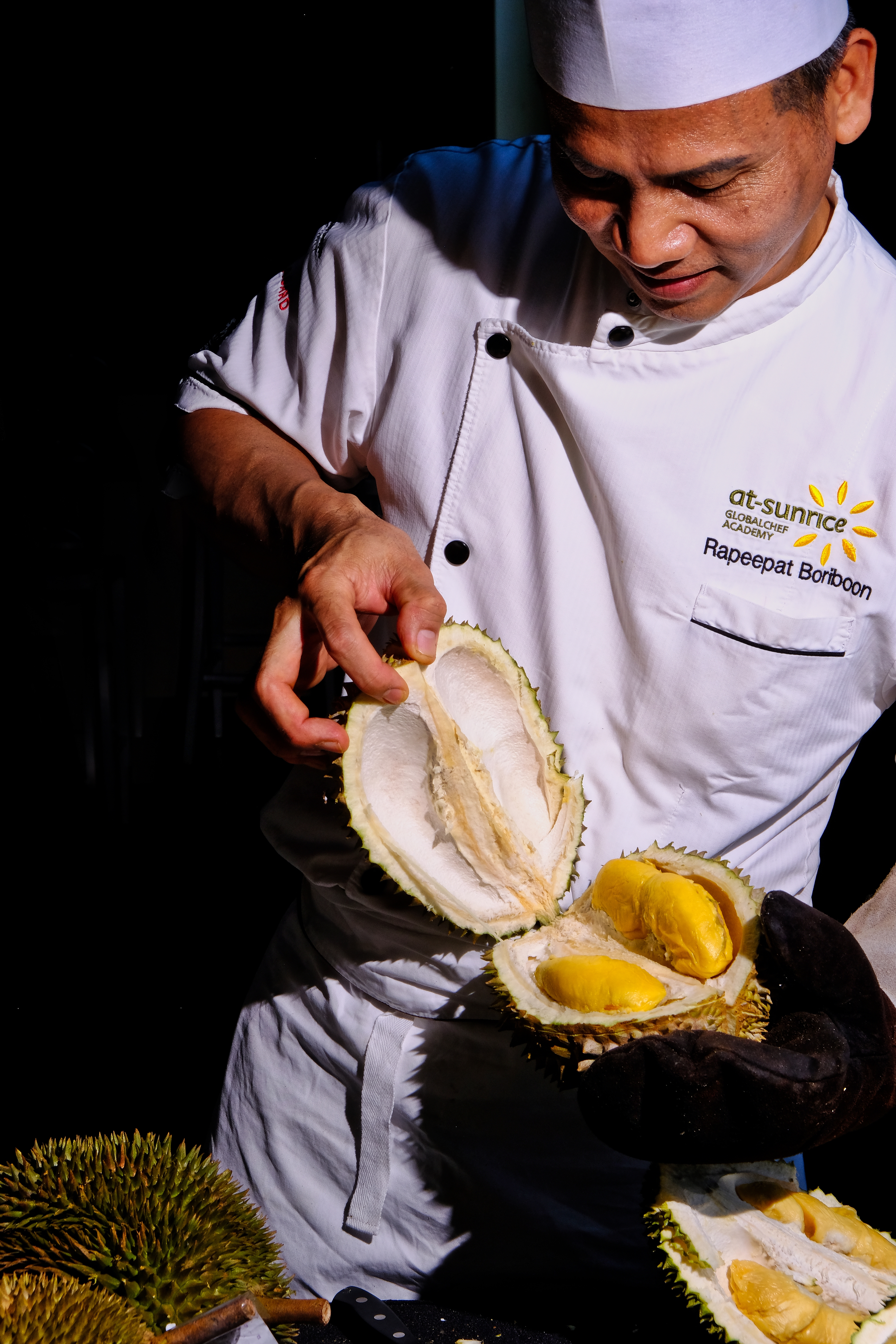
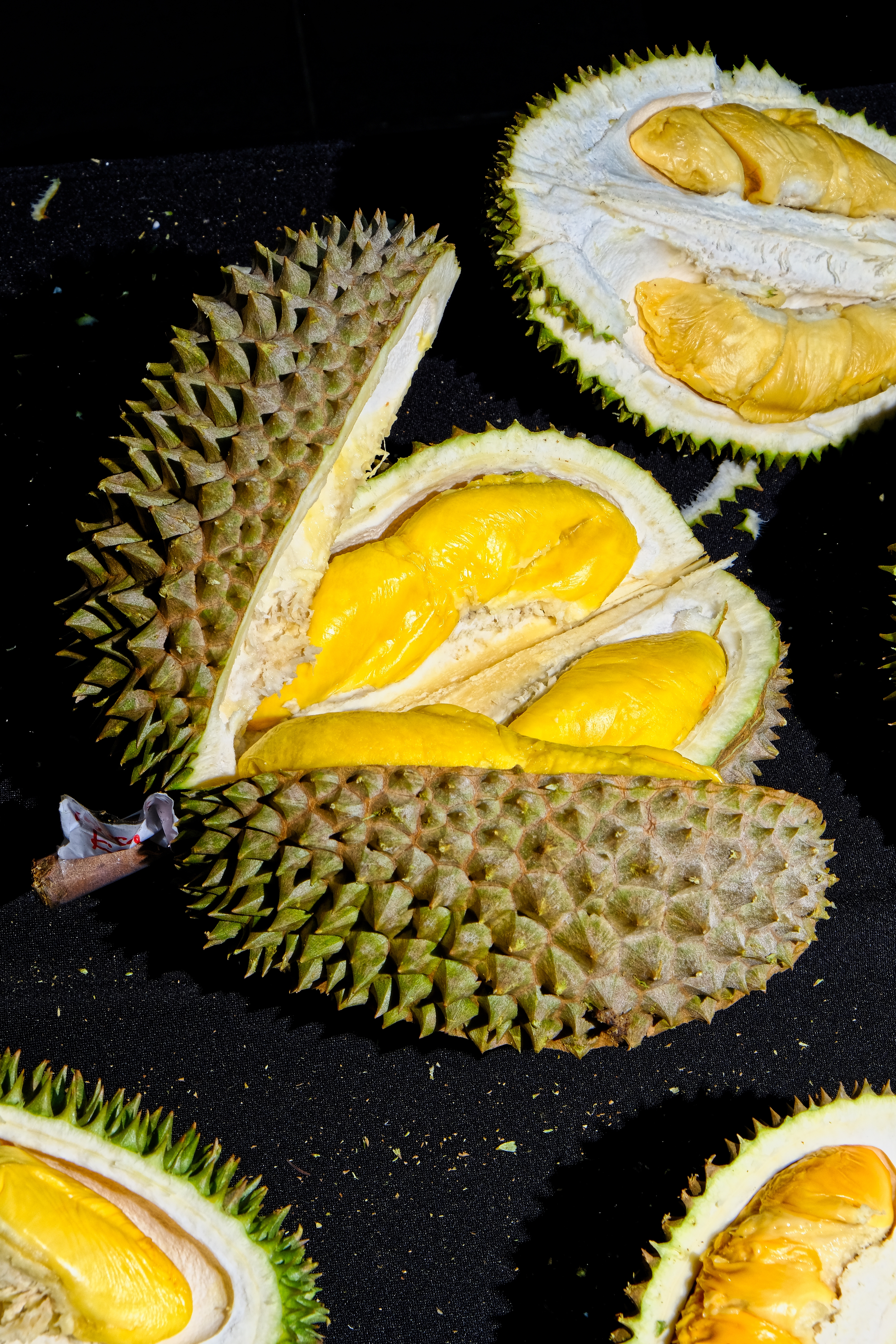
This site uses Akismet to reduce spam. Learn how your comment data is processed.